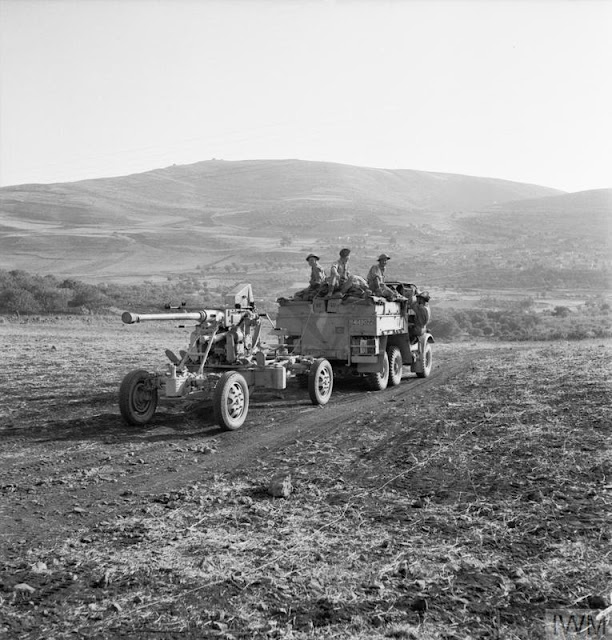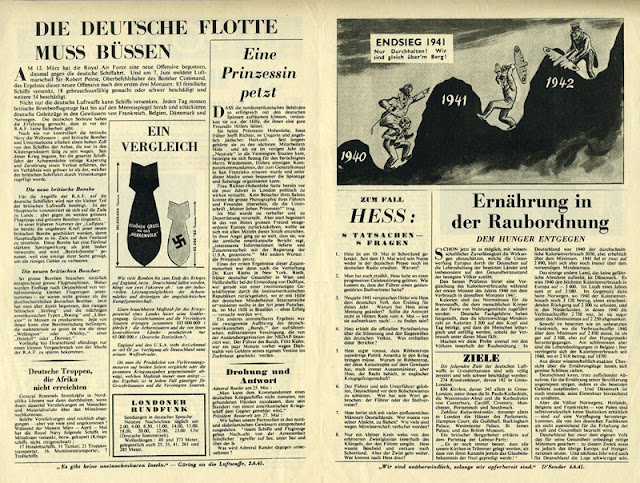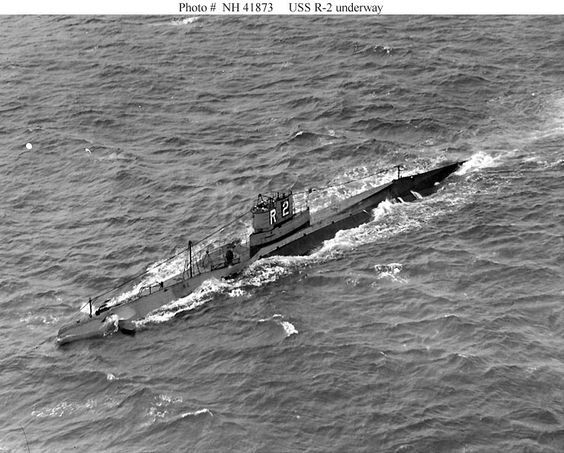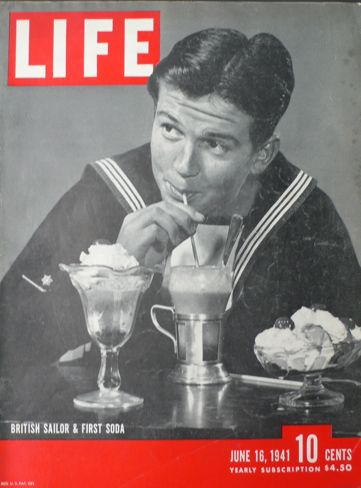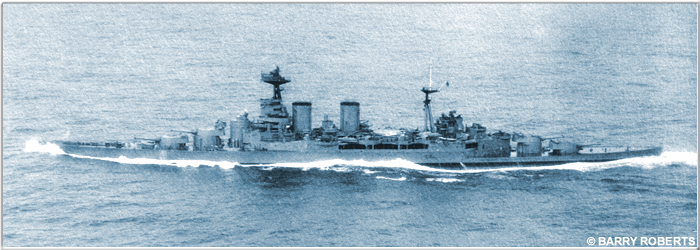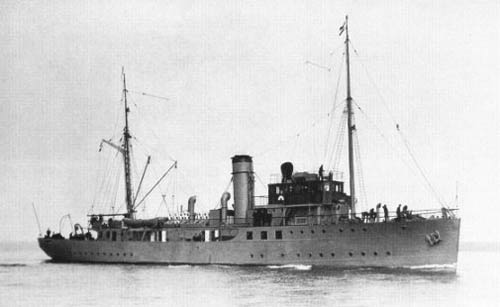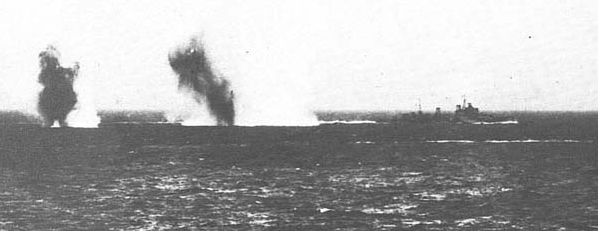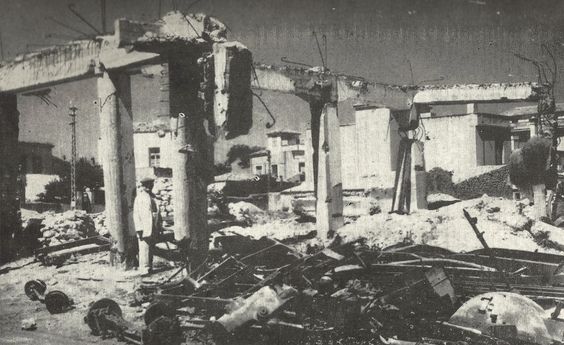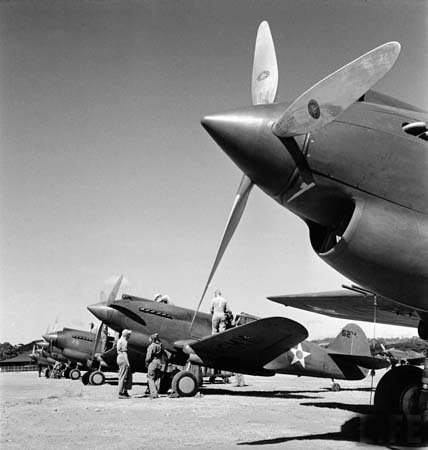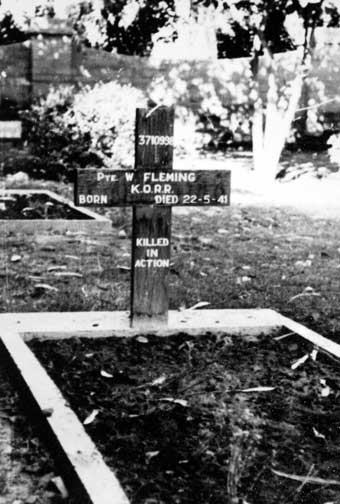Friday 20 March 1942
 |
| The MacArthur family (Jean, Arthur, and Douglas) at the Terowie train station on 20 March 1942 (Photo - Terowie Citizens' Ass. Inc.). |
Battle of the Pacific: During his seemingly endless train ride from Alice Springs to Melbourne, General Douglas MacArthur seizes a chance at Terowie railway station north of Adelaide, Australia, to make a speech on 20 March 1942.
The President of the United States ordered me to break through the Japanese lines and proceed from Corregidor to Australia for the purpose, as I understand it, of organizing the American offensive against Japan, a primary object of which is the relief of the Philippines. I came through and I shall return.The phrase "I shall return" becomes a battle cry for many in the Pacific Theater of Operations. MacArthur does not spend much time at Terowie, where he and his party are only changing trains, but his remarks are broadcast around the world. He has had a long, lonely ride to think up what to say, and he does it right.
 |
| "Burma. 20 March 1942. General Sir Archibald Wavell (right) is greeted by General T. J. Hutton, General Officer Commanding in Chief of Burma, upon his arrival at an RAF airfield." Australian War Memorial P02491.106. |
The Japanese attempt to neutralize the strong Allied air power in Burma by attacking the American Volunteer Group (AVG) base at Magwe. They also attack "Burwing" (the RAF command in Burma). The British pull back from Tharrawaddy.
 |
| The 20 March 1942 Brooklyn Eagle is full of optimism due to the stirring words of General MacArthur in Australia. |
Japanese Mitsubishi G4M Navy Type 1 "Betty" bombers attack Broome Airfield in Western Australia. They attack from high altitude and do not cause any damage because most of the bombs miss the airfield completely. One nearby aboriginal is killed by a bomb splinter.
USS South Dakota (BB-57) is commissioned in Philadelphia, Pennsylvania. It will see heavy action in the Pacific during the second half of 1942 and later serve in the Atlantic for a while before returning to the Pacific.
 |
| "USS_Grunion (SS-216), stern view at rest. March 20, 1942, at the Electric Boat Co., Groton, CT. In a little less than 6 months, the boat and all her crew would be M.I.A." (U.S. Navy). |
The attack goes wrong right from the start, with some of the panzers running into a minefield and others being slowed by thick fog. The Red Army reacts quickly and blocks the advance with a battalion of T-26 tanks and four heavy KV-1 tanks of the 55th Tank Brigade. After losing 32 of 152 tanks damaged or destroyed, Manstein calls off the attack. The one success of the attack is that it disrupts the Soviets' own planned attack in the same area, so it serves as an unintended spoiling attack.
With Operation Raubtier having accomplished its main mission, the Wehrmacht quickly shifts to the next operation on the docket. This is Operation Brueckenschlag ("Bridge-building"), an attempt to relieve the Demyansk pocket. There is some doubt whether the trapped men in the Demyansk Pocket can hold out through the Spring thaw ("Rasputitsa"), which is fast approaching, so every day is precious. German resources, especially in the air, are so light that they cannot do even these small operations contemporaneously, but only in sequence. Adolf Hitler personally is ordering these shifts from East Prussia, keeping a close eye on daily developments. The Luftwaffe spends today shifting its units from the Volkhov to the Demyansk area, and Generalmajor Walter von Seydlitz-Kurzbach shifts his attack units into position on the X Corps line. The relief attack is scheduled to begin at daylight on the 21st.
 |
| "Seaman James Sweeney with his Lewis gun." A gunner on board the trawler HMS Cornelian, 20 March 1942. © IWM (A 8009). |
"Plan for Initiation of U.S. Army Bombardment Operations in the British Isles" is released by the US Army Air Force. It spells out an agenda of using the British Isles to bomb German infrastructure on the Continent. Major General Ira C Eaker submits a report to Major General James E Chaney, requested on 25 February 1942, analyzing the best methods for this air offensive. It concludes that an effective campaign can be waged by combining USAAF daylight precision bombing with RAF night area bombing. The effects of the bombing campaign can be enhanced by close coordination between the two air forces.
 |
| "Launch of the U.S. Navy light cruiser USS Birmingham (CL-62) at the Newport News Shipbuilding and Dry Dock Company shipyard, Newport News, Virginia (USA), on 20 March 1942." US Naval History and Heritage Command NH 75592. |
Italian submarine Enrico Tazzoli (Cmdr Carlo Fecia di Cossato) spots British tanker Davila while heading back to Bordeaux but cannot attack because of previous war damage on its patrol. However, the crew of the Davila spots the submarine and decides to attack it. Cossata dives when the Davila begins firing at him. Both ships escape without damage. This is a rare instance of a tanker attacking a submarine instead of vice versa.
Norwegian 823-ton freighter Risøy is attacked by three aircraft and sunk near Trevose Head, Cornwall, England. There is one death.
 |
| British tanker Davila, which attacked the Italian submarine Enrico Tazzoli on 20 March 1942. |
The Royal Navy is running another major convoy operation to Malta from Gibraltar. Force H brings a flight of Spitfires to replace the planes lost in the recent Luftwaffe onslaught on the island. This is operation MG 1. A separate convoy of four freighters, MW-10, also departs from Alexandria bound for Malta. The Royal Navy positions six submarines in the Gulf of Taranto in case the Italian Fleet decides to intervene. With all of these ships in motion, the possibility of a major battle is likely, and this leads eventually to the Second Battle of Sirte.
Luftwaffe Field Marshal Albert Kesselring, who has brought his headquarters of Luftflotte 2 to Italy from the Eastern Front, begins a massive aerial assault on Malta. Kesselring considers Malta the key to control of the central Mediterranean and asks Hitler around this time to invade it, to which Hitler replies, "I will, Field Marshal, I will!"
As a decoy for the naval operations, the British Eighth Army is tasked with drawing German attention to land operations. It launches raids against German landing grounds in the Derna and Benghazi area after dark.
Malta itself remains under heavy air attack. Bombs land all over the island, and there are several mass air raids involving many dozens of Luftwaffe aircraft. The Germans also increasingly are strafing civilian areas with cannon fire. Ta Qali airfield is so badly damaged that the Army must be called to repair it.
Partisans: Operation Munich, an anti-partisan operation in the Yelnya-Dorogobuzh area that began on 19 March, continues today. The partisans sometimes make a stand and fight ferociously, but more often they just melt away into the forests and towns and blend in with innocent townspeople. The Red Army has reinforced the partisan forces with trained soldiers who provide organizational and weapons skills.
At the Polish town of Zgierz, the German occupation forces decide to enforce draconian new rules for taking reprisals against partisans. The Germans round up 100 Poles from a nearby labor camp and execute them in front of an assembled crowd of 6000 from Zgierz and the surrounding area.
Soviet/Japanese Relations: While both nations are engaged in fights to the death, Japan and the USSR maintain eerily normal relations. Today, their representatives sign an extension of the 1928 Russo-Japanese Fishing Convention in Kuibyshev (the location of most of the bureaucracy of the Soviet government).
US Military: New US Navy aircraft carrier USS Hornet (CV-8) arrives in San Diego after transiting the Panama Canal. It will soon begin carrier qualifications. The Hornet has been experimenting with launching B-25B bombers in anticipation of a bombing raid on a target yet to be disclosed to anyone on board the ship. Sixteen B-25s are being prepared for this mysterious mission by stripping them of everything not deemed essential.
British Government: Sir Stafford Cripps, on his way to India to talk to Mahatma Gandhi and other Indian nationalists, stops off in Cairo to receive a briefing.
Holocaust: Adolf Hitler discusses the Final Solution with Propaganda Minister Joseph Goebbels at Rastenburg. Goebbels notes in his diary:
An English translation of a dispatch in which the Chilean consul in Prague, Gonzalo Montt Rivas discusses the Holocaust winds up in American files by 20 March 1942. This is the earliest proof that American authorities had reason to know the Holocaust was in progress. In the memo, Rivas tells his colleagues about a German decree that Jews living abroad could no longer be German subjects and that their property would be confiscated. Writing in Spanish, Rivas says:
The first mass transport of Jews to the Auschwitz death camp begins on 20 March 1942. Occupation authorities in Poprad, Slovakia, tell local unmarried Jewish women and girls to assemble at the local school at 8 a.m. to be taken to do war work. The Hlinka guard, the military arm of Catholic priest Jozef Tiso’s First Slovak Republic, loads them into windowless cattle cars. The car is empty save for a vegetable tin to serve as a toilet. Within a week, the 800 victims, joined by others along the way, are inmates at Auschwitz.
American Homefront: With fuel rationing in effect, companies are finding creative ways to get their employees to work. Today, the Chief of Transportation at Redstone Ordnance Plant (later Redstone Arsenal) in Madison County, Alabama, establishes a Share-A-Ride program. The Army provides gasoline to drivers with cars who are willing and able to drive other employees to and from work. A growing fraction of these employees, incidentally, are women.
March 1942
March 1, 1942: Second Battle of Java Sea
March 2, 1942: Huge Allied Shipping Losses at Java
March 3, 1942: Japan Raids Western Australia
March 4, 1942: Second Raid On Hawaii
March 5, 1942: Japan Takes Batavia
March 6, 1942: Churchill Assaults Free Speech
March 7, 1942: British Defeat in Burma
March 8, 1942: Rangoon Falls to Japan
March 9, 1942: Japanese Conquest of Dutch East Indies
March 10, 1942:US Navy attacks Japanese Landings at Lae
March 11, 1942: Warren Buffett's First Stock Trade
March 12, 1942: Japan Takes Java
March 13, 1942: Soviets Attack In Crimea Again
March 14, 1942: The US Leans Toward Europe
March 15, 1942: Operation Raubtier Begins
March 16, 1942: General MacArthur Gets His Ride
March 17, 1942: MacArthur Arrives in Australia
March 18, 1942: Japan Attacks In Burma
March 19, 1942: Soviets Encircled on the Volkhov
March 20, 1942: "I Shall Return," Says MacArthur
March 21, 1942: Germans Attack Toward Demyansk
March 22, 1942: Second Battle of Sirte
March 23, 1942: Hitler's Insecurity Builds
March 24, 1942: Bataan Bombarded
March 25, 1942: Chinese Under Pressure in Burma
March 26, 1942: Win Or Die, Vows MacArthur
March 27, 1942: The Battle of Suusari
March 28, 1942: The St. Nazaire Commando Raid
March 29, 1942: The Free Republic of Nias
March 30, 1942: Japanese-Americans Off Bainbridge Island
March 31, 1942: Japanese Seize Christmas Island
2020
 |
| British destroyer Heythrop, sunk by U-652 off Bardia on 20 March 1942. |
Malta itself remains under heavy air attack. Bombs land all over the island, and there are several mass air raids involving many dozens of Luftwaffe aircraft. The Germans also increasingly are strafing civilian areas with cannon fire. Ta Qali airfield is so badly damaged that the Army must be called to repair it.
 |
| Rhodesian Pilot Officer Douglas Leggo, shown here before his commission, was shot down and perished on 20 March 1942. The message on the plane is written in Shona (Media Drum World). |
At the Polish town of Zgierz, the German occupation forces decide to enforce draconian new rules for taking reprisals against partisans. The Germans round up 100 Poles from a nearby labor camp and execute them in front of an assembled crowd of 6000 from Zgierz and the surrounding area.
 |
| US tanker Oakmar, sunk by U-71 on 20 March 1942. |
US Military: New US Navy aircraft carrier USS Hornet (CV-8) arrives in San Diego after transiting the Panama Canal. It will soon begin carrier qualifications. The Hornet has been experimenting with launching B-25B bombers in anticipation of a bombing raid on a target yet to be disclosed to anyone on board the ship. Sixteen B-25s are being prepared for this mysterious mission by stripping them of everything not deemed essential.
British Government: Sir Stafford Cripps, on his way to India to talk to Mahatma Gandhi and other Indian nationalists, stops off in Cairo to receive a briefing.
 |
| Railroad Magazine, March 1942. |
Here, the Fuhrer is as uncompromising as ever. The Jews must be got out of Europe, if necessary by applying the most brutal methods.It is not only the Jews, of course, who are the recipients of the "most brutal methods." Hitler's first objective, though, is to obtain slave laborers for the Reich's war needs.
An English translation of a dispatch in which the Chilean consul in Prague, Gonzalo Montt Rivas discusses the Holocaust winds up in American files by 20 March 1942. This is the earliest proof that American authorities had reason to know the Holocaust was in progress. In the memo, Rivas tells his colleagues about a German decree that Jews living abroad could no longer be German subjects and that their property would be confiscated. Writing in Spanish, Rivas says:
The Jew [residing abroad] loses German nationality immediately... The fortune which the Reich obtains in this manner will serve to solve the questions in connection with JewsRivas notes that "The German triumph [in the war] will leave Europe freed of Semites."
The first mass transport of Jews to the Auschwitz death camp begins on 20 March 1942. Occupation authorities in Poprad, Slovakia, tell local unmarried Jewish women and girls to assemble at the local school at 8 a.m. to be taken to do war work. The Hlinka guard, the military arm of Catholic priest Jozef Tiso’s First Slovak Republic, loads them into windowless cattle cars. The car is empty save for a vegetable tin to serve as a toilet. Within a week, the 800 victims, joined by others along the way, are inmates at Auschwitz.
American Homefront: With fuel rationing in effect, companies are finding creative ways to get their employees to work. Today, the Chief of Transportation at Redstone Ordnance Plant (later Redstone Arsenal) in Madison County, Alabama, establishes a Share-A-Ride program. The Army provides gasoline to drivers with cars who are willing and able to drive other employees to and from work. A growing fraction of these employees, incidentally, are women.
 |
| ''Li'l Abner'' Comic Strip From 20 March 1942 Featuring Li'l Abner & Mammy Yokum -- Drawn & Signed by Al Capp. |
March 1942
March 1, 1942: Second Battle of Java Sea
March 2, 1942: Huge Allied Shipping Losses at Java
March 3, 1942: Japan Raids Western Australia
March 4, 1942: Second Raid On Hawaii
March 5, 1942: Japan Takes Batavia
March 6, 1942: Churchill Assaults Free Speech
March 7, 1942: British Defeat in Burma
March 8, 1942: Rangoon Falls to Japan
March 9, 1942: Japanese Conquest of Dutch East Indies
March 10, 1942:US Navy attacks Japanese Landings at Lae
March 11, 1942: Warren Buffett's First Stock Trade
March 12, 1942: Japan Takes Java
March 13, 1942: Soviets Attack In Crimea Again
March 14, 1942: The US Leans Toward Europe
March 15, 1942: Operation Raubtier Begins
March 16, 1942: General MacArthur Gets His Ride
March 17, 1942: MacArthur Arrives in Australia
March 18, 1942: Japan Attacks In Burma
March 19, 1942: Soviets Encircled on the Volkhov
March 20, 1942: "I Shall Return," Says MacArthur
March 21, 1942: Germans Attack Toward Demyansk
March 22, 1942: Second Battle of Sirte
March 23, 1942: Hitler's Insecurity Builds
March 24, 1942: Bataan Bombarded
March 25, 1942: Chinese Under Pressure in Burma
March 26, 1942: Win Or Die, Vows MacArthur
March 27, 1942: The Battle of Suusari
March 28, 1942: The St. Nazaire Commando Raid
March 29, 1942: The Free Republic of Nias
March 30, 1942: Japanese-Americans Off Bainbridge Island
March 31, 1942: Japanese Seize Christmas Island
2020










